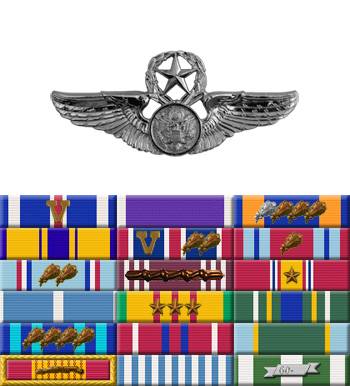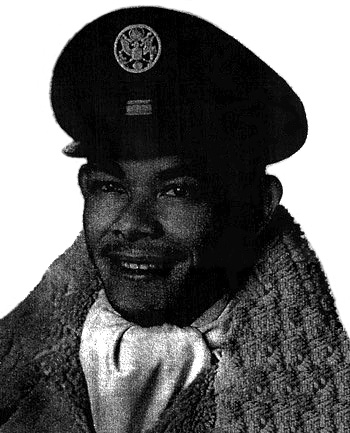
|
Walter L. Ferguson |
 |
|||
| Rank, Service | ||||
Senior Master Sergeant E-8, U.S. Air Force |
||||
| Veteran of: | ||||
|
||||
| Tribute: | ||||
Walter Ferguson was born on June 22, 1929, in Hope, Arkansas, and grew up in Detroit, Michigan. He enlisted in the U.S. Air Force on September 12, 1951, and was trained as an Aerial Gunner. Ferguson's first assignment was to the 67th Bomb Squadron of the 44th Bomb Wing at Lake Charles AFB, Louisiana, where he served as a B-29 Superfortress gunner from October 1952 to July 1953, followed by service with the 91st Strategic Reconnaissance Squadron (redesignated the 6091st Reconnaissance Squadron in December 1954) at Yokota AB, Japan, from December 1953 to April 1958. Sgt Ferguson then served with the 28th Air Base Group at Ellsworth AFB, South Dakota, from April to October 1958, before receiving additional training to transition to the B-52 Stratofortress. After completing B-52 Combat Crew Training, he was assigned to the 73rd Bomb Squadron at Seymour-Johnson AFB, North Carolina, from May 1959 to July 1960, and then with the 342nd Bomb Squadron (redesignated the 781st Bomb Squadron in February 1963) at Robins AFB, Georgia, from July 1960 to April 1965. Sgt Ferguson then served with the 26th Bomb Squadron at Altus AFB, Oklahoma, from April 1965 to July 1968, and with the 6th Bomb Squadron at Clinton Sherman AFB, Oklahoma, from July 1968 to December 1969. During this time, Sgt Ferguson participated in combat operations while deployed to Southeast Asia in 1969. He was assigned to the 340th Bomb Squadron as a B-52G tail gunner at Blytheville AFB, Arkansas, in December 1969, and deployed to Andersen AFB, Guam, in support of operations in Southeast Asia from December 1971 until he was killed in action during Operation Linebacker on December 18, 1972. Sgt Ferguson's remains were returned to the U.S. on August 23, 1978. |
||||
|
||||

